I'm already nostalgic for this past summer. Warm days spent frolicking outside, picnics, ice cream, birds chirping and the nonstop sound of lawnmowers as the smell of freshly cut grass wafts over the garden. But that sweet grass smell is a chemical reaction, a warning signal that the lawn has been wounded and now it's now open to attack by pests. And as a nation, the U.S. tosses 23 million tons of lawn clippings a year into already bursting landfills — material that could be turned into free fertilizer, namely compost.
Television and radio ads work hard to convince you that your landscape is imperfect and impure if you don't slave over it, using fertilizers and pesticides and weed killers. Images of suburban cowboy husbands persist, wrangling weeds and farming one of the largest and most useless crops in the world.
Lawns are a noble's ideal, literally, and since the 1800s Americans have been trying to emulate expansive aristocratic estates in Europe on quarter-acre lots. What's the deal with lawn? And how and why should we lose some of it?
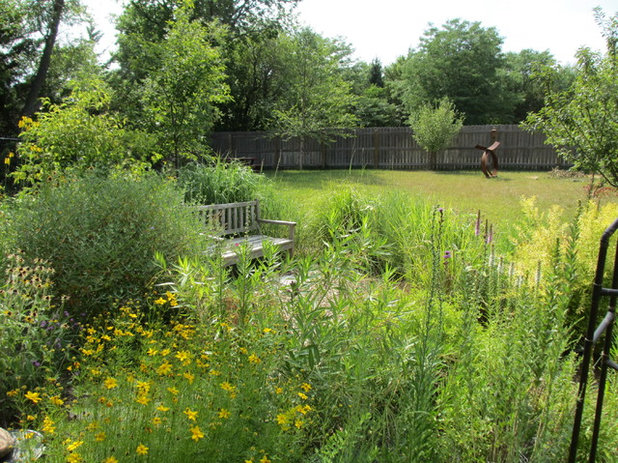
Benjamin Vogt / Monarch Gardens
What is beautiful in nature can be quite subjective. A person's idea of beauty in the desert Southwest surely is much different than someone's idea in New England. Of course that's OK, but I bet those ideas of beauty are based on regional, native, wild habitats, and of personal experiences living in those places that define cultural and personal ideals. It doesn't matter whose idea is "better" or "right," only that those beliefs lead to healthy people, plants and wildlife. All gardeners have choices that lead to the well-being of all life under our care, including our own. Prairie, forest, desert, marsh — it's all relative.
In the photo here, do you wish to be in the lawn, or the garden? Or is the juxtaposition of the two somehow enticing? Which is more in tune with its region, and in turn, gets us in tune with our home ground?
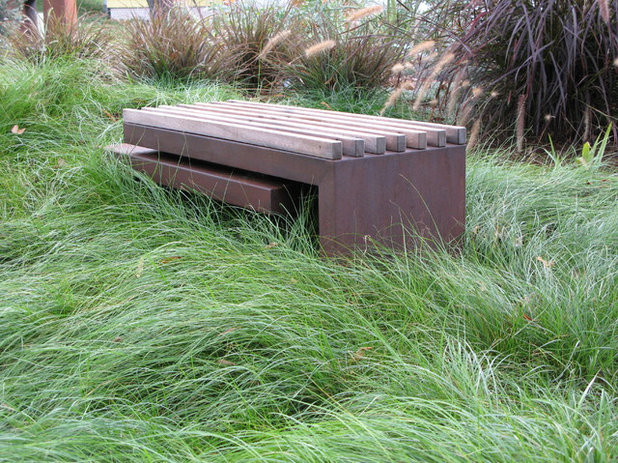
debora carl landscape design
If you love the look of grass but don't need a baseball field (most folks don't, unless you live in Iowa), consider letting your grass grow longer — or converting to native, water-sipping grasses like blue grama, buffalo and sideoats grama (just a few among many). Lots of places also sell no-mow seed mixes designed to be drought tolerant with slow growth habits but that mimic traditional lawns.
If you let your lawn grow taller, the roots will go deeper and the blades will shade the soil, trapping more moisture. Besides, doesn't the bench and grass area here look stunning? With lawns taking up the same square footage in the U.S. as New York state, we have to ask ourselves: Do we really need all of that lawn, or is it just a default landscape setting? What are we sweating, spraying and fertilizing for?
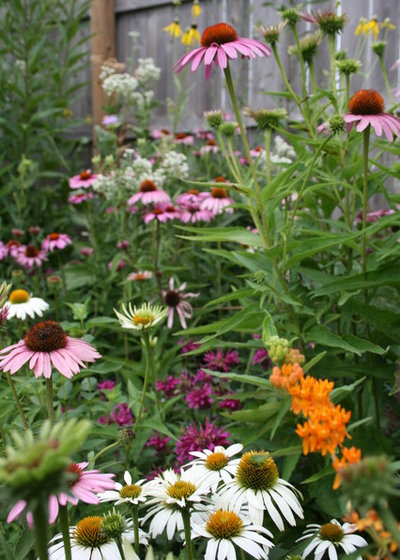
Benjamin Vogt / Monarch Gardens
If you enjoy seeing butterflies, birds and bees, then having a diversity of flowers is key. These flowers can be on trees, shrubs or perennials. If you feel you could do with less lawn, think of tilling up some of it and overseeding with a regional native seed mix. Fall is a great time for getting seeds into bare soil, as many seeds need a cold and wet winter to germinate the following year.
Lawns are ecological dead zones, meaning the wildlife they support is infinitesimal to what a forest, prairie, marsh or even desert can support. The more lawn you take out and replace — even with clover or other blooming ground covers — the better the environment will be. Cities in California and other nearby states are paying residents up to $2 per square foot to remove lawn and replace it with drought-tolerant native landscapes or permeable hardscapes.
The EPA says lawn equipment emits 11 times the pollution as cars. If we can shrink lawns or use electric mowers and organic lawn care, then we will have not only beautiful landscapes, but healthy ones, too.
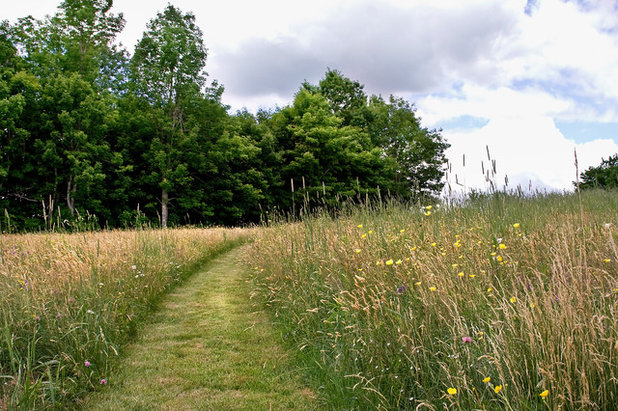
Matthew Cunningham Landscape Design LLC
Obviously, as you remove lawn in your front yard, you might raise some neighborhood eyebrows — but have faith in your maverick tendencies. You can start small, which will help you and your neighbors adjust; slowly extend or deepen your planting beds and borders, maybe put an island out in a corner toward the street, even tear up and reseed the hell strip with native grasses and wildflowers as a sort of test area. The key is to always show that there is intent and design, and not just a "weedy" patch you "let go."
If you go all the way and reseed your entire front landscape, consider mowing a pathway that could double as a second sidewalk, which shows design purpose. Or the pathway could have stone steppers, or be mulch or gravel; the options are endless.
You can do a more formal look, too, having taller plants in the back of beds, repeating plants, using shrubs to anchor corners — really, you can do anything. Just experiment and surf the photos here at Houzz.
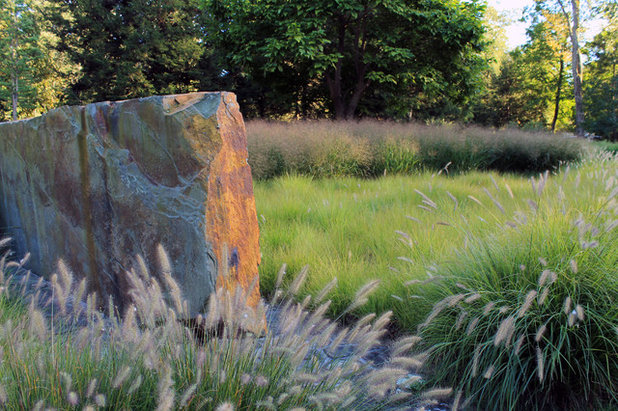
AHBL
Have you heard of nature deficit disorder? I know — it sounds silly at first, but I believe it's real. I take my college classes outside, and my classmates can't identify the call of a robin or blue jay, both quite common birds, let alone an oak tree.
Did you know that the famous nature photographer Ansel Adams had ADHD? Do you know how he eased it? Maybe we all should get outside and photograph lovely natural vistas more often.
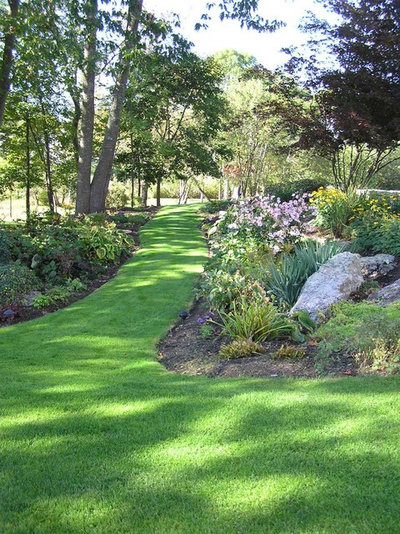
Woodburn & Company Landscape Architecture, LLC
What design elements can you use to invite people into nature? How can you create an ecosystem landscape that requires little maintenance and relies on nature to do the work of pest and disease control? I believe in the power of site-specific native plants, particularly shrubs and small trees that require even less maintenance than perennial grasses and flowers, with their annual spring cut-down.
The more we encourage one another to get outside, the more connected to ourselves, our families and our cities we'll be. Surely that means we'll be happier and have more balanced lives.
More: How to landscape for less lawn





